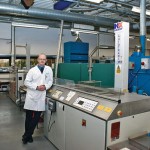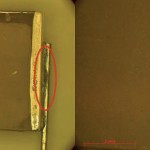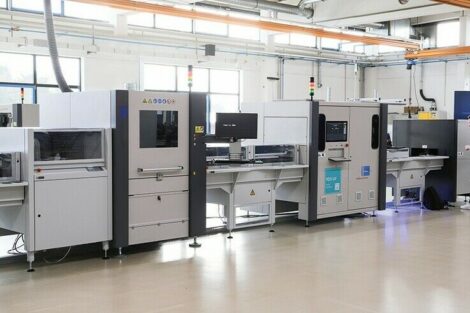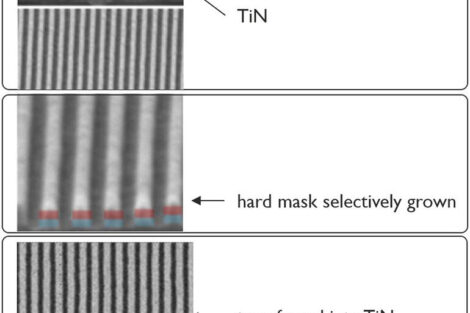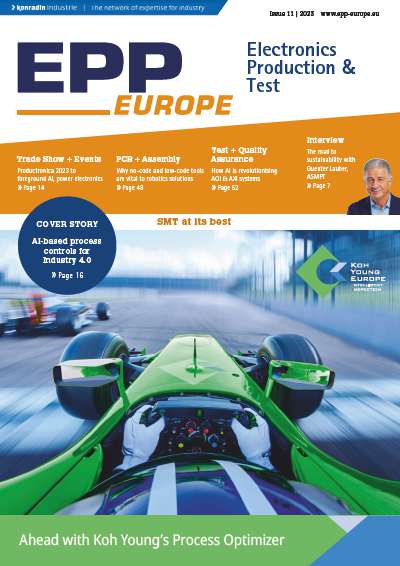Looking at typical electronic assemblies, resistors and capacitors are the most frequently used components on populated assemblies. Flux residues from soldering have to be removed from the capacitors completely by a suitable cleaning process prior to coating to ensure their reliability. Syfer replaced its former Dichloromethane cleaning process by an environmental-friendly, water-based alternative, which ensures the highest worker health and environmental safety.
As the field of application is wide spread, the capacitors manufactured by Syfer have to fulfil the quality and reliability requirements of all field sectors. Some applications require the products to operate even under extreme environmental conditions, such as high humidity and temperature changes. Therefore the highest level of expectations is placed on the reliability of capacitors. To meet these demands, a cleaning process is required, which enables the complete removal of all flux residues prior to coating.
To ensure the reliability of the capacitors under all circumstances, Syfer always placed great importance on product quality. This is reflected in several company approvals including ISO 9001:2000 and ISO 14001:2004 and Syfer works according to a strict quality management system.
One important part in assuring the quality is the cleaning process for defluxing the capacitors and filters. After soldering of the radial leaded capacitors, flux residues have to be removed completely by a cleaning process before the components get encapsulated by epoxy powder coatings. Remaining flux residues could otherwise lead to parametric changes and adhesion problems of the coating, which negatively influences the long-term product reliability. In the past the components were therefore processed in a dip tank with ultrasonic agitation and Dichloromethane as a cleaning solvent.
Environment and worker health and safety
Dichloromethane is characterised as harmful (Xn) combined with the R-Phrase R40 (limited evidence of a carcinogenic effect). Following their internal guidelines to offer their employees a healthy and safe working environment, Syfer decided to replace the Dichloromethane process by a modern, safe and environmentally friendly alternative. Due to stricter regulations in terms of volatile organic compounds (VOC) in the industry, the focus was set on a water-based cleaning medium. Compared to solvent-based systems, which usually have a VOC-content of 100%, a water-based system has a VOC content of only around 10 to 30% depending on the formulation of the cleaning agent and its application concentration.
Thus Syfer would be able to meet all the requirements regarding health, safety and environmental regulations for VOC emissions. Besides these hard facts the odour of the cleaning agent, being rather a soft factor, plays an important role. Syfer investigated for a cleaning agent, which offered a much lower odour compared to the penetrating, Chloroform-like smell of Dichloromethane. However, these requirements alone were not the crucial factor. Syfer did also place various demands on the efficiency of the new cleaning process.
In this area, the new cleaning process had to meet several important demands. By eliminating Dichloromethane and sourcing a water-based cleaner, Syfer expected to significantly reduce costs for transportation and storage. As Dichloromethane is a hazardous material, Syfer had to comply with specific regulations for storing, which were quite costly. Additionally, shipping costs for hazardous materials are much higher than for environment-friendly products.
Furthermore, due to the high evaporation loss the Dichloromethane process reached a cleaner consumption of 2800 litre per year. The new cleaning process had to reduce the consumption of the medium to achieve decreased process costs.
Finally the new cleaning process had to feature a wide process window to ensure the complete removal of all flux residues from the capacitors.Summarizing all requirements the new process had to
- Remove flux residues completely
- Ensure residue-free and dry components
- Significantly improve worker health & safety
- Comply with latest environmental regulations
- Reduce overall process costs and consumption
After the definition of all selection criteria, a spray-in-air process was excluded quite soon, as the capacitors are quite small and the fixation of parts would have been difficult. The focus was therefore put on a dip tank process.The decision was made for a Kerry Microclean 4-chamber dip tank machine from Guyson with the water-based cleaning agent Vigon US from Zestron. All requirements could be met best with this combination. Another important fact for the selection of the machine was the local support by Guyson. The Kerry Microclean is equipped with one cleaning tank, a pre-rinse tank with tap water, a fine-rinse with deionised water and a drying chamber. Trials revealed Vigon US to be the best suitable cleaning agent for this application out of a choice of several cleaners, as flux residues from soldering could be removed from the caps completely.
The new cleaning process
The water-based cleaning agent from Zestron is based on the patented MPC (Micro Phase Cleaning) Technology. Due to their special formulation, these cleaning agents guarantee extremely long bath lifetimes. The active cleaning compounds (microphases) do not permanently bind to the contaminants, but remove them from the caps surface and release them into the surrounding phase, where they precipitate. Therefore the contaminants can then be removed from the cleaning bath by simple filtration, while active ingredients remain in the cleaning bath. This means that there is no depletion of the cleaning agent, which leads to an extremely long bath lifetime. Using the water-based process, Syfer is still able to realize similar process times as with the former process (see Table).
Additionally, the VOC content of the new water-based cleaning agent is very low due to its specific formulation, meaning that it evaporates much less than Dichloromethane. Therefore, less intermediate top up is necessary, which leads to a minimum consumption of only 350 litres per year compared to the consumption of the Dichloromethane process with 2800 litres per year. Due to the low VOC content, the new cleaning agent also provides a better CO2 balance compared to solvents and surfactant-based cleaning agents. Thereby, with the new process, Syfer was also able to comply with the latest regulations on VOC emissions.Furthermore, Vigon US is a non-hazardous material and does not require special labelling or precautions. This aspects leads to further cost reductions, as transportation costs are significantly lower.
Syfer is completing over 30 cleaning cycles per day in this process and is achieving consistent cleaning results. All flux residues are removed by the water-based cleaning process. The combination of multistage cleaning machine and innovative cleaning technology met the set target of low consumption. The demands on worker safety and environmental aspects could also be fulfilled completely.
In addition, the process met all of Syfer’s expectations regarding the overall process costs and efficiency. Using the water-based MPC cleaning agent, Syfer was able to reduce maintenance and disposal costs as well as costs for storage and transportation. The cleaning process evaluation at Syfer shows that it is important to work close together with equipment manufacturer and chemistry supplier. Thus, the equipment and the most suitable agent can be defined and the process parameters can be adjusted to the specific contaminants. This enables the complete fulfillment of all requirements.
EPPE413
About Syfer
Syfer Technology Ltd, Norwich, UK, is one of the leading manufacturers of ceramic capacitors. The company has been part of the Dover Corporation since 2000 and is one of the Ceramic Products Group (CPG) Companies within Dover Electronics. The product range includes many application-specific capacitors as well as standard voltages and capacitance values. These products are used in various areas such as telecommunication, power supplies, automotive and aerospace industry..
zusammenfassung
Kondensatoren-Hersteller Syfer hat seinen Reinigungsprozess von Dichlormethan auf das patentierte Micro Phase Cleaning-Verfahren (MPC) umgestellt. Es ist umweltfreundlicher und sicherer für die Mitarbeiter. Bei gleicher Prozessdauer wurde der Reinigungsmittelverbrauch drastisch reduziert.
Le fabricant britannique de condensateurs Syfer a renoncé à son processus de nettoyage au dichlorométhane et a opté pour le procédé Micro Phase Cleaning (MPC). La durée de processus est équivalente, la consommation de produits de nettoyage est en recul. Ce procédé est plus respectueux de l’environnement et plus sûr pour les collaborateurs.
Share:


